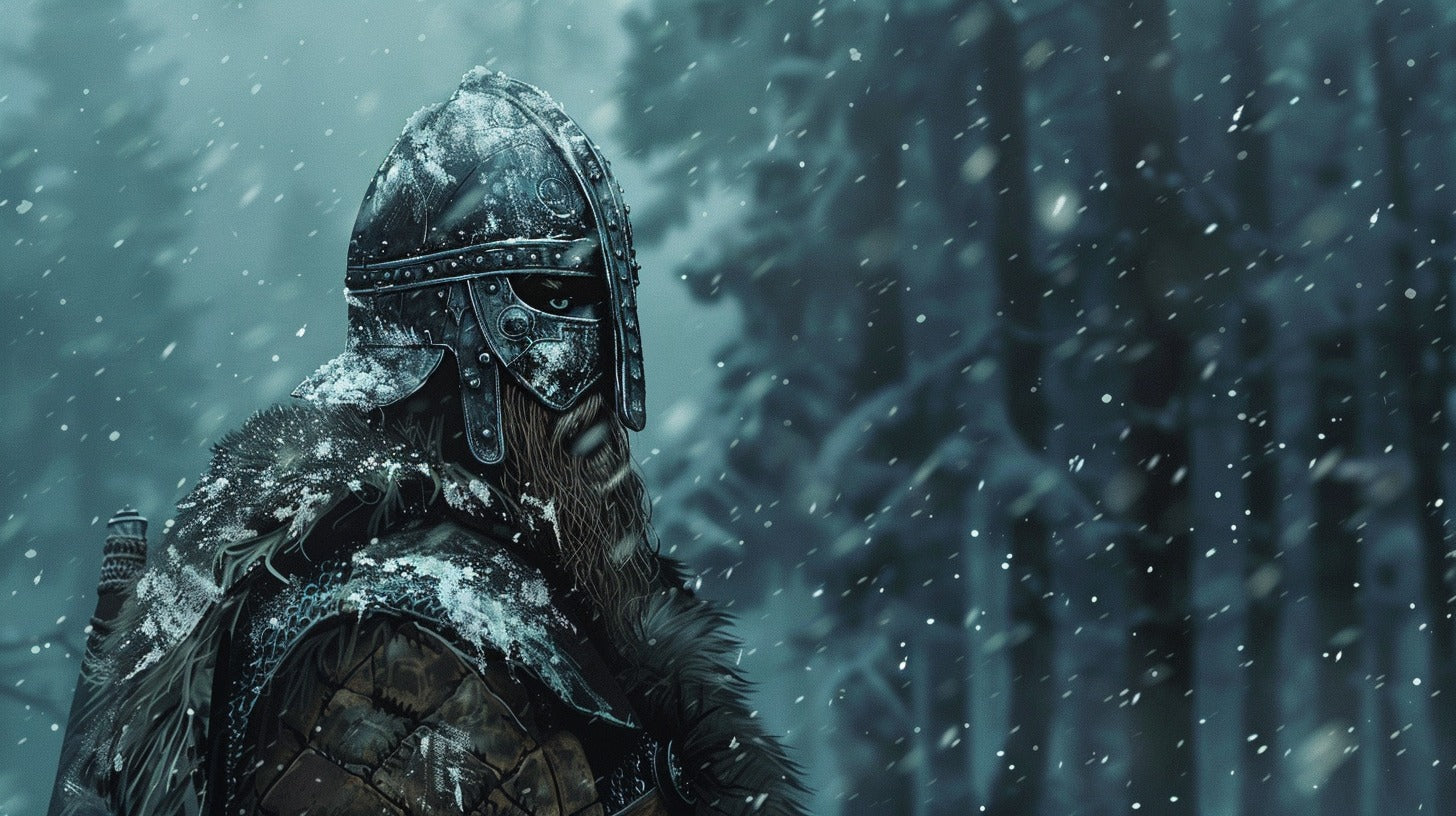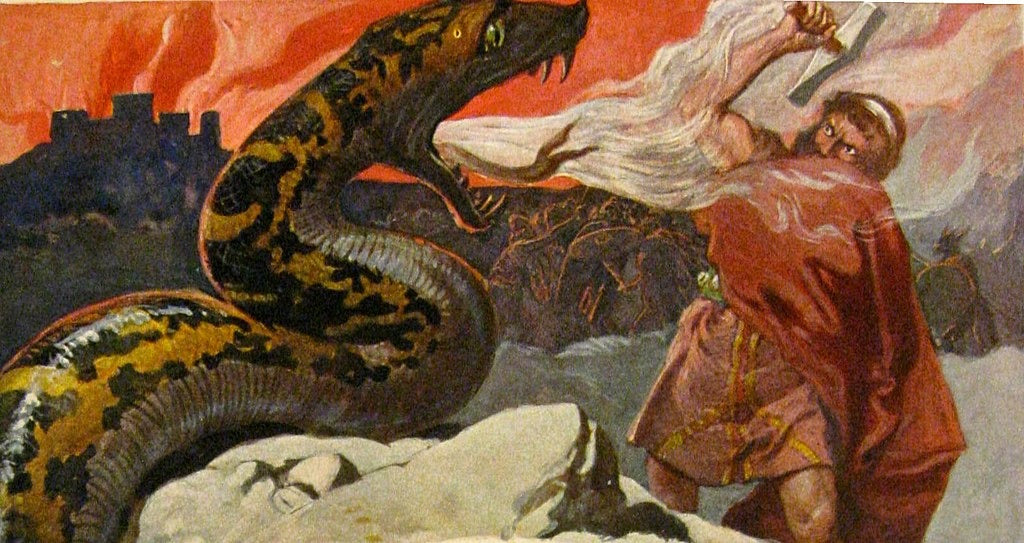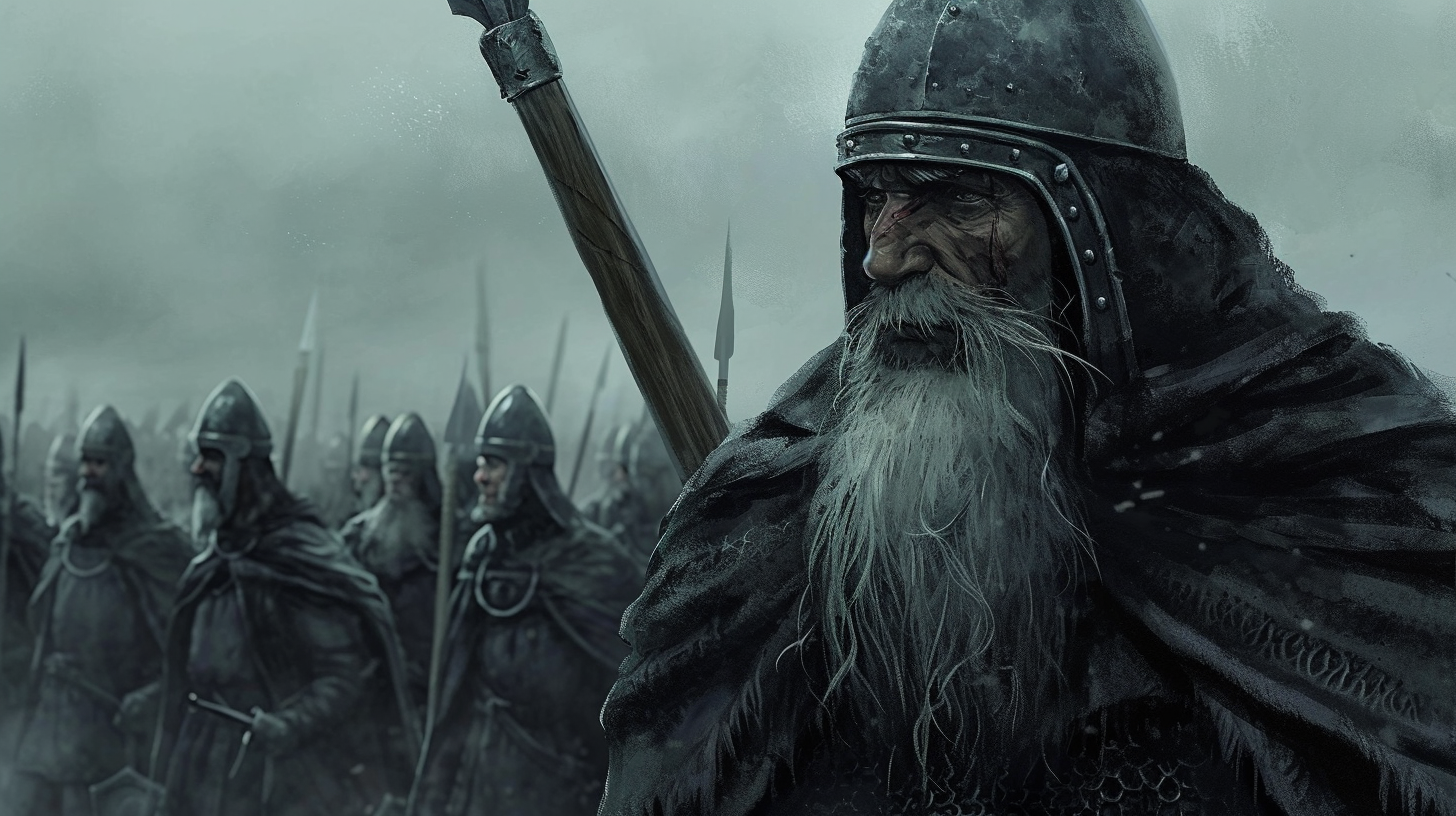
Fimbul Winter: The Devastating Prelude to Ragnarök in Norse Mythology
Picture a world locked in endless winter, where the sun's warmth is but a distant memory and humanity teeters on the brink of extinction. This is Fimbul Winter, the apocalyptic season of Norse legend. Far from being relegated to dusty tomes of mythology, this concept continues to capture imaginations and inform our understanding of cycles of destruction and rebirth. In this exploration, we'll peel back the layers of this frigid tale, revealing its linguistic roots, cultural impact, and startling relevance to our contemporary global crises.
Etymology and Meaning
The term "Fimbul Winter" comes from the Old Norse "fimbulvetr," where "fimbul" means "great" or "mighty," and "vetr" means "winter." This linguistic insight gives us a glimpse into the severity of the event as perceived by the Norse people.
Fimbul Winter in Old Norse Literature
Fimbul Winter is mentioned in several Old Norse texts, most notably in the Poetic Edda and the Prose Edda. In the poem Vafþrúðnismál from the Poetic Edda, we find this chilling description:
"Fímbulvetr munu fara fimm,
en þá engi maðr
öðrum þyrma."
Which translates to:
"Mighty winters will come,
and then no man
will spare another."
This stark passage underscores the harsh conditions and social breakdown that Fimbul Winter is expected to bring.
The Three-Year Winter: A Closer Look

Duration and Severity of Fimbul Winter
According to Norse mythology, Fimbul Winter is not just a single season of extreme cold, but a series of three consecutive winters without any intervening summer. This prolonged period of bitter cold and darkness is said to herald the coming of Ragnarök.
The Prose Edda, compiled by Snorri Sturluson in the 13th century, provides more detail about the nature of Fimbul Winter:
"First of all will come a winter called Fimbulwinter. Snow will drive from all quarters; frosts will be great then, and winds sharp; there will be no virtue in the sun. Those winters will proceed three in succession and no summer between."
Impact on Humanity and Nature
The consequences of Fimbul Winter are described as catastrophic for both humanity and the natural world. Crops fail, leading to widespread famine. The bitter cold and lack of sunlight cause deaths on a massive scale. Social order breaks down as people struggle to survive, leading to conflicts and wars.
Signs and Portents of Fimbul Winter

The Rooster's Crow
In Norse mythology, the onset of Fimbul Winter and the approaching Ragnarök is heralded by the crowing of three roosters. The first to crow is Fjalar, a red rooster who alerts the giants. The second is the golden rooster Gullinkambi, who wakes the gods. The third, unnamed rooster, rouses the dead in Hel.
The Wolf's Howl
Another significant portent is the howling of Garmr, a monstrous hound associated with Hel. The Völuspá, a famous poem in the Poetic Edda, describes this ominous sign:
"Geyr nú Garmr mjök
fyr Gnipahelli,
festr mun slitna,
en freki renna."
Which translates to:
"Now Garmr howls loud
before Gnipahellir,
The fetters will burst,
and the wolf run free."
Fimbul Winter's Role in Ragnarök

The Great Battles
Fimbul Winter sets the stage for the cataclysmic events of Ragnarök. As the world is plunged into chaos and darkness, the giants and monstrous forces of destruction break free from their bonds. This leads to a series of epic battles involving gods, giants, and various mythical creatures.
The Destruction and Rebirth of the World
According to Norse mythology, Ragnarök culminates in the destruction of the current world order. However, it's not an end but a transition. After the great battle and the submersion of the world in water, a new and fertile world is said to emerge, populated by the surviving gods and a new generation of humans.
Interpretations and Symbolism of Fimbul Winter
Climate Change and Environmental Concerns
In modern times, the concept of Fimbul Winter has taken on new significance in light of climate change concerns. Some interpret it as an ancient warning about the potential consequences of environmental destruction and the fragility of our ecosystem.
Societal Collapse and Renewal
On a societal level, Fimbul Winter can be seen as a metaphor for the cyclical nature of civilizations. It represents a period of extreme hardship and societal breakdown, followed by renewal and rebirth.
Fimbul Winter in Modern Culture

The concept of Fimbul Winter has inspired various works across literature, art, film, and television. Its dramatic potential as a world-altering event makes it a compelling element in storytelling. Fantasy novels and graphic novels often draw on the idea of a world-ending winter, captivating audiences with its apocalyptic themes.
A notable example in modern literature is George R.R. Martin's "A Song of Ice and Fire" series, which features a similar concept called the "Long Night." This period of prolonged winter and darkness serves as a looming threat throughout the narrative, echoing the mythological Fimbul Winter.
In recent years, Fimbul Winter and similar concepts have also appeared in various films and TV shows, often as part of a larger exploration of Norse mythology or apocalyptic scenarios. The visual medium allows for striking depictions of a world plunged into endless winter, bringing this ancient myth to life for contemporary audiences.
The Enduring Legacy of Fimbul Winter
Fimbul Winter remains a powerful and evocative concept from Norse mythology. Its vision of a world plunged into darkness and cold, teetering on the brink of destruction, continues to resonate with modern audiences. Whether interpreted literally or symbolically, Fimbul Winter serves as a reminder of the cyclical nature of existence and the potential for renewal even in the darkest of times.
As we face our own global challenges, from climate change to social upheaval, the myth of Fimbul Winter offers both a warning and a glimmer of hope. It reminds us of the resilience of life and the potential for rebirth and renewal, even in the face of seemingly insurmountable odds.
FAQs
- How long is Fimbul Winter supposed to last?
According to Norse mythology, Fimbul Winter is said to last for three consecutive years without any intervening summer.
- Is Fimbul Winter based on any real historical events?
While there's no direct historical basis, some scholars speculate that the myth might have been influenced by severe climate events in Scandinavia's past.
- What happens after Fimbul Winter in Norse mythology?
Fimbul Winter is followed by Ragnarök, the final battle between gods and giants, leading to the destruction and subsequent rebirth of the world.
- Are there similar concepts in other mythologies?
Many cultures have myths about world-ending winters or catastrophic climate events, such as the Hindu Pralaya or various flood myths.
- How do modern Norse pagans interpret Fimbul Winter?








